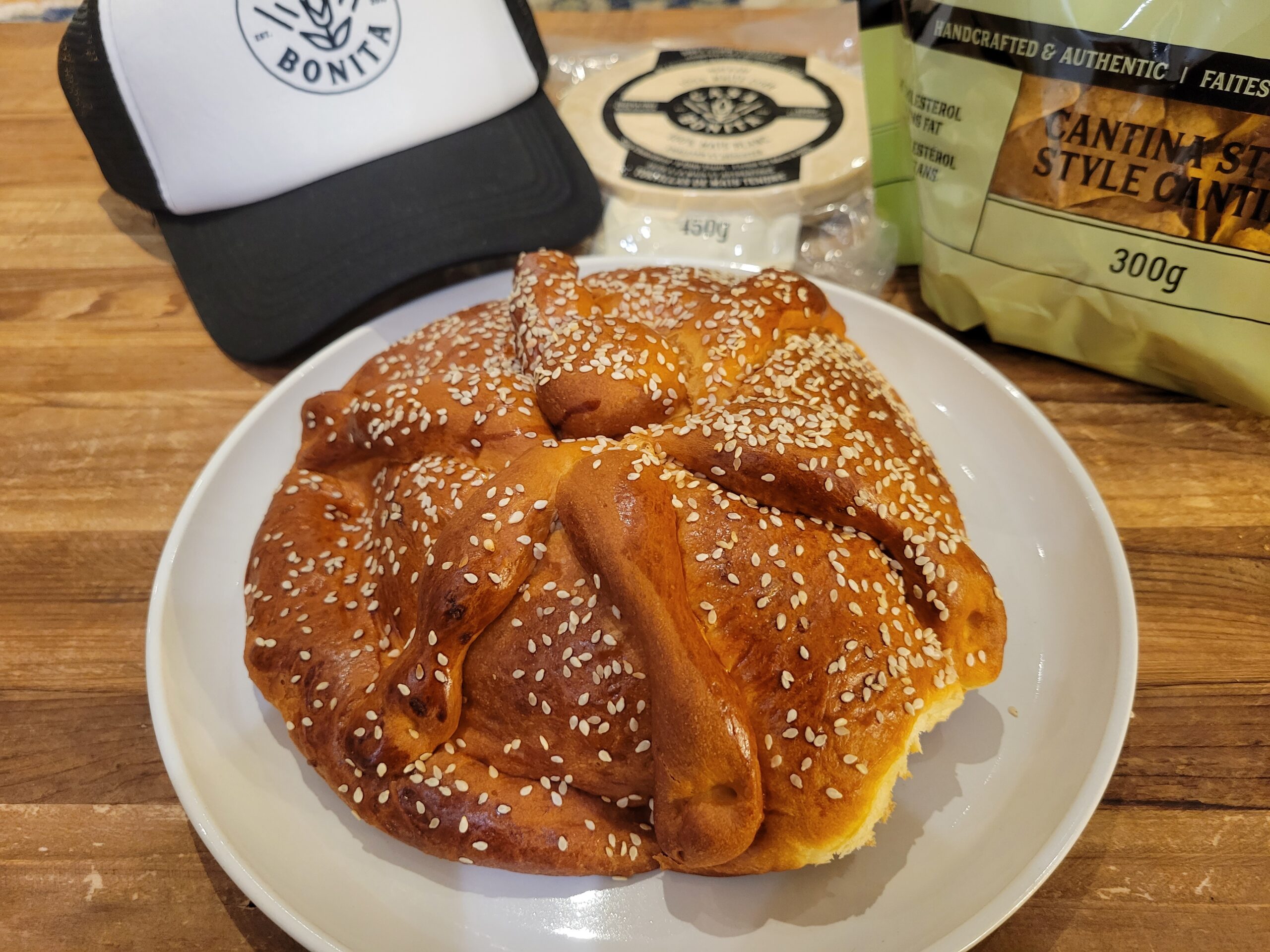
“Dia de los Muertos” in Mexico, or the “Day of the Dead” in English, is a vibrant and cherished holiday that celebrates the lives of departed loved ones. This cultural celebration, which takes place November 1st and 2nd, is marked by colourful altars, people visiting cemeteries, and, of course, an array of delicious traditional Mexican dishes. In this post, we intend to explore a bit further the diverse and delectable offerings from different regions of Mexico during this special time of remembrance. Of course, we’ll also share a traditional recipe at the end of one of our favourite dishes.
Dia de los Muertos is a time for Mexican families to get together and honour and celebrate their ancestors. Through traditional dishes, the flavours of Mexico come alive, telling stories of love, tradition, and remembrance. Some of these dishes vary depending on the region, but you can find tamales, Pan de Muerto, Pibipollo, as well as others options.
Here is a little bit more information on some of the most famous dishes during this special celebration:
Tamales from Oaxaca
For Dia de los Muertos, Oaxacan families often prepare tamales. These steamed corn dough pockets are stuffed with flavorful fillings like mole negro (a rich, chocolatey sauce), black beans, and even shredded chicken. Tamales are then wrapped in banana leaves and slowly steamed to perfection. You can be sure that there will be many flavours and textures available if you happen to visit Oaxaca at the beginning of November.
Pan de Muerto
In the center of Mexico, no Dia de los Muertos altar is complete without “Pan de Muerto” or Bread of the Dead. Usually from Mexico City and the surrounding areas, this sweet bread is sometimes adorned with bone-shaped dough pieces on top, representing the deceased. The bread is subtly flavoured with orange blossom water and anise, making it a delightful treat to enjoy alongside a cup of Mexican hot chocolate. In some cases, sugar is also added to the top for an extra layer of sweetness.
Yucatecan Pibipollo
In the Yucatan Peninsula, families commemorate Dia de los Muertos with a dish called Pibipollo. This unique delicacy resembling a large tamal (as it is made with corn dough) could be prepared with one of these types of shredded meat: turkey, chicken, or pork (in some cases, the three types of meat can be combined for a unique style called “tres carnes”). Achiote paste and various spices are added to complete the dish, wrapped in banana leaves and slow-cooked underground (the traditional cooking technique). The result is a delicious and aromatic dish with a hint of smokiness from the cooking process.
Calabaza en Tacha
In Michoacán, Dia de los Muertos is celebrated with a sweet dish, “Calabaza en Tacha” or candied pumpkin. This treat involves simmering pumpkin slices in a syrup infused with cinnamon, cloves, and piloncillo (unrefined brown sugar). It is a straightforward dish to prepare, but the result is tender, caramelized pumpkin pieces that are comforting and delicious.
So which one is our favourite? Certainly, Pan de Muerto (as seen in the picture) is a fan favourite for the Casa Bonita team. Still, we would be lying if we didn’t say that the Pibipollo, also known as “Mucbipollo” or “Pib” is probably the most delicious one.
The well-known Mucbipollo is genuinely a staple dish from the Yucatan Peninsula in the south of Mexico, and it holds a special place in the culinary traditions of the region, especially during Dia de los Muertos or the Mayan version of this day called “Hanal Pixan.”
Fun fact: Hanal Pixan in Mayan translates roughly to “food for the souls.”
Now, we promised you recipes, right? So here you have some steps on how to prepare our two favourites, the Pib and the Pan de Muerto.
Mucbipollo or Pibipollo recipe
Ingredients:
- Shredded Turkey, Chicken, or Pork: The primary protein in Pibipollo is usually turkey or chicken, but sometimes pork is also an option.
- Achiote Paste: Achiote paste is made from annatto seeds and various spices, imparting a distinct red color and a subtle earthy, peppery flavour to the dish.
- Spices: Pibipollo often includes a blend of spices like allspice, cloves, cumin, and oregano.
- Banana Leaves: Banana leaves are used to wrap the Pibipollo before cooking. They add a unique flavor to the dish and help keep the meat moist during the slow-cooking process.
- Masa: Corn dough will be the exterior layer of the dish.
Preparation:
- Marinating the Meat: The meat is marinated in achiote paste, spices, and sometimes sour orange juice to infuse it with flavour. The achiote paste gives the meat its characteristic reddish hue.
- Assembling the Dish: After marinating, the meat is placed on a bed of masa, a corn dough, which is spread out like a large tortilla. The shredded meat is placed on top of the masa. At the end the dish will resemble a large tamal.
- Banana Leaf Wrapping: The meat and masa mixture is carefully wrapped in banana leaves, creating a packet or bundle. This wrapping not only imparts a unique aroma to the dish but also helps in slow cooking.
- Slow Cooking: Traditionally, the mucbipollo or pibipollo is cooked in an underground pit known as a “pib.” That’s also why the dish is known simply as “pib” in the Yucatan. With hot stones at the bottom and the top (with the pibipollo in the middle), the whole pit is covered with dirt to slow-cook the dish for hours. Alternatively, this can be replicated in a conventional oven, but the meat tens to be tender when cooked underground.
Pan de Muerto recipe
Ingredients:
- Flour: The main ingredient is wheat flour.
- Sugar: Pan de Muerto is sweetened with sugar.
- Eggs: Eggs provide moisture to help bind the dough together.
- Butter or Lard: Fat, typically in the form of butter or lard.
- Yeast: Yeast is the leavening agent to make the bread rise.
- Milk or Water: Liquid is added to the dough for consistency.
- Flavourings: Orange blossom water or anise seeds for the unique taste of this traditional Mexican bread.
Flavour and Texture
Pan de Muerto has a soft and slightly sweet crumb, often enhanced by the addition of citrusy flavours like orange blossom water or zest. The exterior is typically brushed with a sugar glaze after baking, giving it a subtle sweetness and a shiny appearance.

